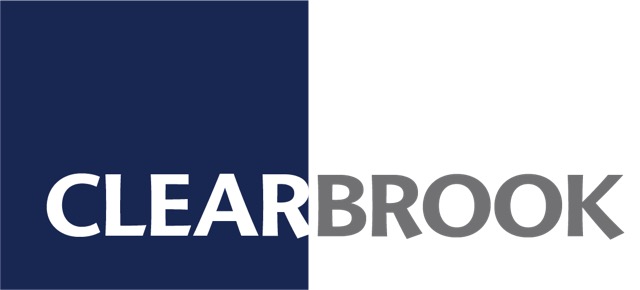Domestic Equity
- Markets initially reacted positively to the anticipated cut of interest rates by the Federal Reserve on August 31st. However, U.S.-China trade tensions quickly escalated thereafter as the US announced plans to increase tariffs by 10% by September. In retaliation, China has announced that it would stop all purchases of US agricultural products and has allowed their currency to devalue.
- Nonetheless, equity markets continue to enjoy a strong rally YTD through July with the S&P 500 up 20.2% through the end of July. Driving domestic markets has been the Technology and Communications sectors, which are up 31.2% and 23.5% for the year, respectively. With exceptionally low interest rates, investors are looking for areas of growth to drive returns. As a result, the Russell 1000 Growth index is up 24.2% for the year, whereas the Russell 1000 Value index is up 17.2%.
- For the month, large caps outperformed small caps as there was an expectation that the trade tension would ease and as the cut in interest rates would disproportionally benefit bigger companies with potentially larger debt burdens. This dynamic has continued throughout the year as the Russell 2000 is up 17.7%, 2.5% behind the S&P 500.
- On a valuation basis, the forward P/E ratio for the S&P 500 is 16.8x, slightly above its 5-year average of 16.5x.
International Equity
- International developed markets rallied in July. However, the strong USD caused US investors to experience negative returns. On a local currency basis, EAFE was up 0.71%. However, on a USD basis, EAFE returned -1.27%. The 1.91% disparity is due to the appreciation of the USD. Many factors contributed to the strength of the USD including the appointment of Boris Johnson as PM of the United Kingdom. Johnson has been vocal about his interest in exiting the EU by the deadline date of October 31st, with or without a deal. A no deal Brexit is expected to cause a slowdown of trade in Europe as trade agreements would not be in place and could materially impact an already weak European GDP.
- Emerging markets were weak as China’s economic growth slumped to its lowest level in 27 years as the trade war with the US has begun to have a material impact. China’s GDP grew at 6.2% on an annualized rate for the quarter ending June, the slowest quarterly growth rate since 1992, and down from 6.4% the previous quarter.
Fixed Income
- On Wednesday, August 31st, the Fed announced that it would discontinue its quantitative tightening program, and allow treasuries and mortgage-backed securities held on the Fed’s balance sheet to be reinvested upon maturity, rather than being allowed to roll off.
- Going into the FOMC meeting, many market participants were pricing in multiple rate cuts this year. As a result, many investment-grade borrowers looked to get ahead of the FOMC meeting and issued almost $90 billion in new supply, exceeding an estimated $75 billion of issuance. Interestingly, YTD supply of almost $664 billion is 7% behind last year’s pace and the slowest pace since 2014.
- The risk on environment was met with heavy supply, and corporate spreads tightened 8bps to 107bps, a new year-to-date tight, before closing the month at 108bps.
- High-yield corporates benefited from rising equity prices, and spreads tightened by 6bps, from 377bps to 371bps.
- Securitized sectors outperformed Treasuries, specifically MBS, with the highest month of excess return in over four years.
Economics
- The Fed confirmed global central banks’ dovish pivot in July, as it cut rates for the first time since 2008. The 25bp reduction of the fed funds rate was less than some market participants wanted but was in line with expectations. In addition to the cut in rates, the Fed announced that it would immediately stop quantitative tightening, two months short of schedule. The 180 degree turnaround by global central banks to a stimulus mode has been engendered by a marked slow-down in global industrial production, corporate capital expenditures, trade concerns, and the persistence of stubbornly low rates of inflation.
- The ISM Manufacturing PMI in the US fell to 51.2 in July 2019 from 51.7 in the previous month, missing market expectations of 53.4. The latest reading pointed to the weakest pace of expansion in the manufacturing sector since August 2016 as production growth slowed sharply while the pace of job creation was near a three-year low. It was the fifth straight month of declines for the PMI index. The ISM non-manufacturing activity index fell to 53.7 from 55.1 the month before. Expectations were for a reading of 55.5 for July.
- In Europe, The Flash Composite PMI in July were weak and point to slowing GDP growth. The flash composite output index came in at just 51.5, down 0.7 points versus its final June reading and well short of market expectations. It was also perilously close to the 50-expansion threshold and a 3-month low. The headline decline was largely due to another poor period for manufacturing where the flash PMI dropped 1.2 points from its final June mark to 46.4, its worst showing in over seventy-nine months.
- In Asia, the flash estimate for the Japan manufacturing PMI headline index for July was 49.6, up from the final estimate of 49.3 for June. The report cited weak Chinese demand as a significant factor weighing on activity and sentiment. This survey has shown contraction in the Japanese manufacturing sector for five of the last six months. Output fell for a seventh consecutive month in July though at a slower pace than in June, while new orders and new export orders were also reported to have fallen again.

